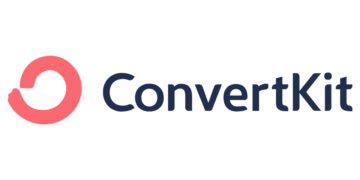No products in the cart.
The Future of WordPress: Headless, AI, and the Evolving Block Editor
One of the most exciting developments in the future of WordPress is the rise of headless WordPress. This approach to web development separates the backend (content management system) from the frontend (the user interface). With a traditional WordPress setup, the backend and frontend are tightly integrated, but with headless WordPress, the backend serves as a content repository, while the frontend is built using a separate technology stack.
This decoupling of the backend and frontend provides developers with greater flexibility and allows for the creation of more dynamic and interactive websites. By using headless WordPress, developers can leverage the power of WordPress as a content management system while taking advantage of modern frontend frameworks like React or Angular to build the user interface.
Headless WordPress also enables the creation of mobile apps and other digital experiences that can consume WordPress content through APIs. This opens up a whole new world of possibilities for content creators and developers, as they can now deliver content to a wide range of platforms and devices.
One of the key advantages of headless WordPress is its ability to improve website performance. With a traditional WordPress setup, each page request requires the server to generate the HTML, CSS, and JavaScript for the entire page. This can result in slower page load times, especially for websites with a large amount of content or complex functionality.
However, with headless WordPress, the backend only needs to serve the content through APIs, while the frontend handles the rendering of the user interface. This means that the server can focus solely on delivering the content, resulting in faster page load times and a smoother user experience.
Another benefit of headless WordPress is its scalability. With a traditional setup, WordPress can sometimes struggle to handle high traffic volumes, especially during peak times. However, by decoupling the backend and frontend, developers can scale each component independently.
For example, if a website experiences a sudden surge in traffic, developers can easily add more frontend servers to handle the increased load without affecting the backend. This allows for greater flexibility and ensures that the website remains responsive even during periods of high demand.
In addition to performance and scalability, headless WordPress also offers improved security. By separating the backend from the frontend, developers can implement stricter security measures for the server that hosts the content. This reduces the risk of unauthorized access to sensitive data and helps protect against potential security vulnerabilities.
Furthermore, headless WordPress allows for easier integration with third-party services and tools. Since the frontend is built using a separate technology stack, developers have more freedom to choose the tools and services that best suit their needs. This can include anything from analytics platforms to e-commerce solutions, making it easier to create a customized and optimized website.
In conclusion, the rise of headless WordPress is revolutionizing web development by decoupling the backend and frontend. This approach offers numerous benefits, including improved performance, scalability, security, and integration capabilities. As more developers recognize the advantages of headless WordPress, we can expect to see an increase in the number of websites and digital experiences built using this innovative approach.
The Integration of Artificial Intelligence
Artificial intelligence (AI) is no longer just a buzzword; it is becoming an integral part of many industries, and WordPress is no exception. In the future, we can expect to see increased integration of AI technologies within the WordPress ecosystem.
One area where AI is already making an impact is in content creation. AI-powered tools can analyze data, generate insights, and even write articles or blog posts. While AI-generated content may not replace human writers entirely, it can be a valuable tool for generating ideas, improving productivity, and enhancing the overall quality of content.
AI can also be used to personalize user experiences on WordPress websites. By analyzing user behavior and preferences, AI algorithms can deliver personalized content recommendations, suggest relevant products or services, and even optimize website layouts for individual users. This level of personalization can greatly enhance user engagement and improve conversion rates.
Furthermore, AI can help automate repetitive tasks, such as image tagging, spam detection, and customer support. By leveraging AI technologies, WordPress users can save time and resources, allowing them to focus on more meaningful and strategic initiatives.
Another area where AI can be integrated into WordPress is in website security. With the increasing number of cyber threats, AI-powered security systems can analyze patterns, detect anomalies, and proactively protect websites from attacks. These systems can continuously learn and adapt to new threats, providing an additional layer of defense against hackers and malicious activities.
Moreover, AI can play a significant role in improving search engine optimization (SEO) for WordPress websites. AI algorithms can analyze search engine algorithms, identify trends, and provide recommendations to optimize website content, meta tags, and keywords. By leveraging AI in SEO efforts, WordPress users can increase their website’s visibility and attract more organic traffic.
Additionally, AI can enhance the accessibility of WordPress websites. AI-powered tools can automatically generate alt text for images, provide voice recognition capabilities for users with disabilities, and even offer real-time language translation. These features can make WordPress websites more inclusive and accessible to a wider range of users.
In conclusion, the integration of artificial intelligence into WordPress opens up a world of possibilities. From content creation and personalization to security and SEO, AI technologies can revolutionize the way websites are managed and optimized. By embracing AI, WordPress users can stay ahead of the curve and deliver exceptional experiences to their audience.
The Evolving Block Editor
The block editor, also known as Gutenberg, was introduced in WordPress 5.0 and has since undergone significant improvements and enhancements. This new editing experience allows users to create rich and dynamic content by adding and arranging blocks of different types.
In the future, we can expect to see the block editor evolve even further, with more advanced block types and customization options. This will empower content creators to design and build websites with greater flexibility and creativity.
One of the key advantages of the block editor is its intuitive and user-friendly interface. Even non-technical users can easily create and customize content without the need for coding skills. This democratization of web design and development is a significant step forward for WordPress and will continue to attract a broader audience.
Additionally, the block editor is highly extensible, allowing developers to create custom blocks and extend its functionality. This opens up a world of possibilities for developers to build unique and tailored solutions for their clients.
As the block editor continues to evolve, we can expect to see more advanced features and capabilities being added. For example, there may be new block types specifically designed for e-commerce websites, making it easier for online store owners to showcase their products and manage their inventory.
Furthermore, we may see enhancements in the customization options available within the block editor. This could include more control over typography, color schemes, and layout options, allowing users to create truly unique and personalized websites.
Another area where the block editor could evolve is in its integration with third-party plugins and tools. Currently, there are already many plugins available that extend the functionality of the block editor, but as the editor continues to evolve, we may see even tighter integration with popular plugins like Yoast SEO or WooCommerce.
Overall, the block editor is a game-changer for WordPress users, providing a more intuitive and flexible way to create and manage content. With its ongoing evolution and the introduction of new features, the block editor will continue to shape the future of web design and development.
The Impact on Future Development Practices
The future of WordPress is not just about new technologies and features; it also has implications for development practices and workflows. As WordPress evolves, developers will need to adapt to these changes and embrace new best practices.
With the rise of headless WordPress, developers will need to become proficient in frontend technologies like React or Angular. This shift may require additional training and learning, but it also presents new opportunities for developers to expand their skill sets and work on more diverse projects.
Furthermore, the integration of AI technologies will require developers to understand and work with AI algorithms and tools. This may involve collaborating with data scientists and AI experts to implement AI-powered solutions effectively.
The evolving block editor also calls for a shift in how developers approach website design and development. With the block editor, the focus is on creating reusable blocks and components, rather than building custom templates from scratch. This modular approach requires a different mindset and development approach, but it also promotes efficiency and reusability.
Moreover, the future of WordPress development is likely to see an increased emphasis on security. As WordPress becomes more popular and widely used, it becomes a bigger target for hackers and malicious actors. Developers will need to implement robust security measures and stay updated on the latest security practices to protect WordPress websites and user data.
Additionally, the future of WordPress development may also involve a greater integration of e-commerce functionality. As more businesses turn to WordPress for their online presence, developers will need to be well-versed in integrating e-commerce plugins and building secure and scalable online stores.
In conclusion, the future of WordPress development holds numerous opportunities and challenges. Developers will need to adapt to new technologies, such as headless WordPress and AI, while also prioritizing security and e-commerce integration. By staying informed and embracing these changes, developers can unlock new possibilities and deliver exceptional digital experiences for users.






















![A Comprehensive Review of [Course/Product/Experience Name] 22 man in gray shirt sitting on black chair](https://theamericansidehustle.net/wp-content/uploads/2025/03/man-in-gray-shirt-sitting-on-black-chair-1-scaled.jpg)














































































